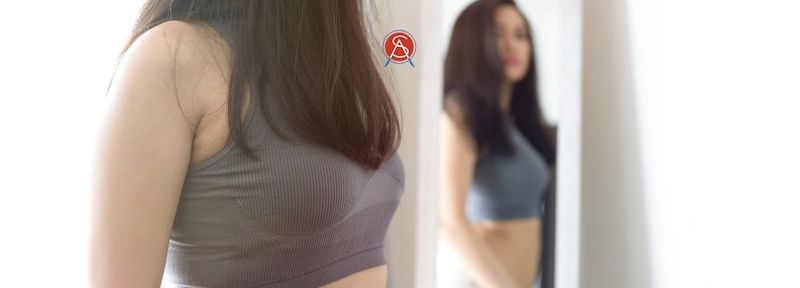
We are often told the first step in reaching emotional stability and a sense of well-being is to “love yourself.” One can wonder if the person that came up with this ever truly struggled with a broken sense of self. There’s probably not a person around who wouldn’t love to love themselves, but sometimes, for those of us that have struggled with body image issues and the lifestyle habits and social behaviors that stemmed from them, loving oneself is a lot harder than most will know.
What Is Body Image?
Body image is the filter through which we see ourselves. That view is impacted by many factors including experiences, upbringing, expectations, and the ability to sift through the pressures of society. That sounds like a lot, and it is.
But I thought body image was how you felt when you dressed up and went out?
Body image goes far beyond just the aesthetic. It’s how you feel about yourself down to the core. This feeling could’ve been developed over time from childhood. We slowly absorb examples of what was considered beautiful and accepted while facing pressure from influential people in our lives as to how lovable we are based on how we look. These influences come not only from early home life and adolescence, but from school experiences, socioeconomic norms, media portrayals, and now a bombardment of filtered social media images that continue to set the bar on what is “beautiful” and influential.
If body image was only about how we felt based on a number on the scale, or how toned our arms are, this would be less nuanced. We all have a laundry list and clear path of what tools we could use to “improve” that version of our body. But because this is as much mental as it is physical, to truly start to feel comfortable in our skin and understand how to filter the pressures around us, we must take a measured approach by beginning to address both the physical and mental components of a healthy body image.
Be Honest
The first tool is to be honest with yourself. Be honest about where you are in your life, and how you’ve taken that out on who you are right now. Certainly, this can also be a celebration of the hard work and effort you’ve put into yourself, but for most with poor body image, these feelings tilt to toward negative. We beat ourselves up for poor choices, not only with food but with the interpersonal relationships in our lives and we are often paralyzed from the aftermath of the choices we’ve made. By being honest with yourself and saying I’ve had a rough go or I’m not as disciplined as I’d like to be, the pressure starts to come off. Now out in the open, you start to take responsibility and accept the fact that where we are is due to our own behavior. With that knowledge, we learn if we have power to launch these negative behaviors, we sure have the power to change them. Look at it as empowering rather than sobering.
Your Goals
You’ve been honest with yourself. Now ask yourself what your goal is. Do you feel you’ve put in the time and energy and effort and respect you deserve? Much of this has very little to do with gym time and calorie counting. Rather sometimes the way we treat ourselves and look at ourselves is a referendum on what we believe we deserve. In some ways, we punish ourselves for the poor choices we’ve made, and this compounds unless we admit it and own it. Positive body image is the total of many choices toward self-improvement. So, when one sets a goal, it shouldn’t be pounds or dress size or even how someone else feels about how you look. The goal should be wellness and empowerment and having the respect for yourself to take the time to make small changes which will all add up.
What Is “Normal?”
Another way to improve body image is to start understanding the images, messaging, and “normal” we are sold through social media and advertising are not reality. We are all savvy enough to understand we live in a world of Photoshop, filters, good angles, and better lighting. But knowing this, we must give ourselves the respect to admit all of these add up to something with which none of us can compete.
Just as we’ve learned to moderate indulgent food, we need to understand indulging in the media portrayal of the perfect body, and the notion those are the only bodies that are acceptable or desirable (or happy!), is unhealthy. Just as we need to step away and redefine our relationship with triggers and substances if we had a dependency that was unhealthy, we need to take responsibility in limiting the amount of social media content we digest or risk becoming numb to it. If you repeat something enough it starts to sound normal. And once it’s “normal,” anything that doesn’t look like it seems abnormal.
As we’ve mentioned, seeing oneself as undesirable or having an unhealthy body image is very common. There are, however, cases of severe body dysmorphia, where you don’t see yourself as the world sees you. These are issues that must be addressed with a mental health professional. If you believe this applies to you, please speak to your primary care physician or bariatric surgeon about getting help.
The next step is to start treating yourself the way you would want to be seen. Small changes like dressing well, taking the time for better make-up or hair care… treating yourself now with something you’ve denied yourself until “you’re thin,” all build our sense of self. Once we accept we’ve started respecting ourselves again, this treatment becomes infectious. We feel better, and in turn, our confidence makes us look better. We carry ourselves differently; we interact with others differently; and from that, we redefine not only how the world seems to see us, but for how we see ourselves.


